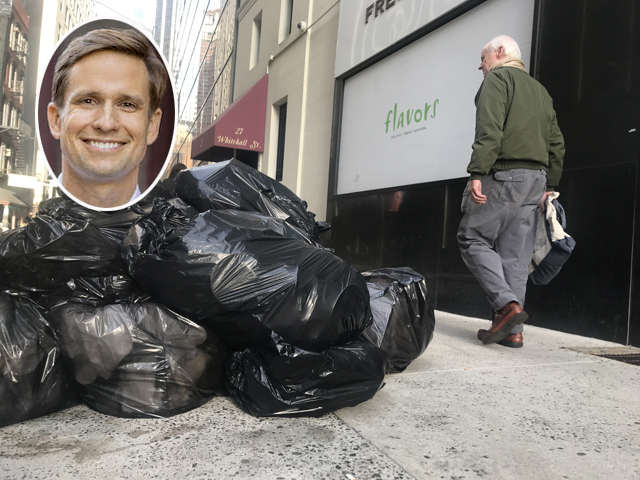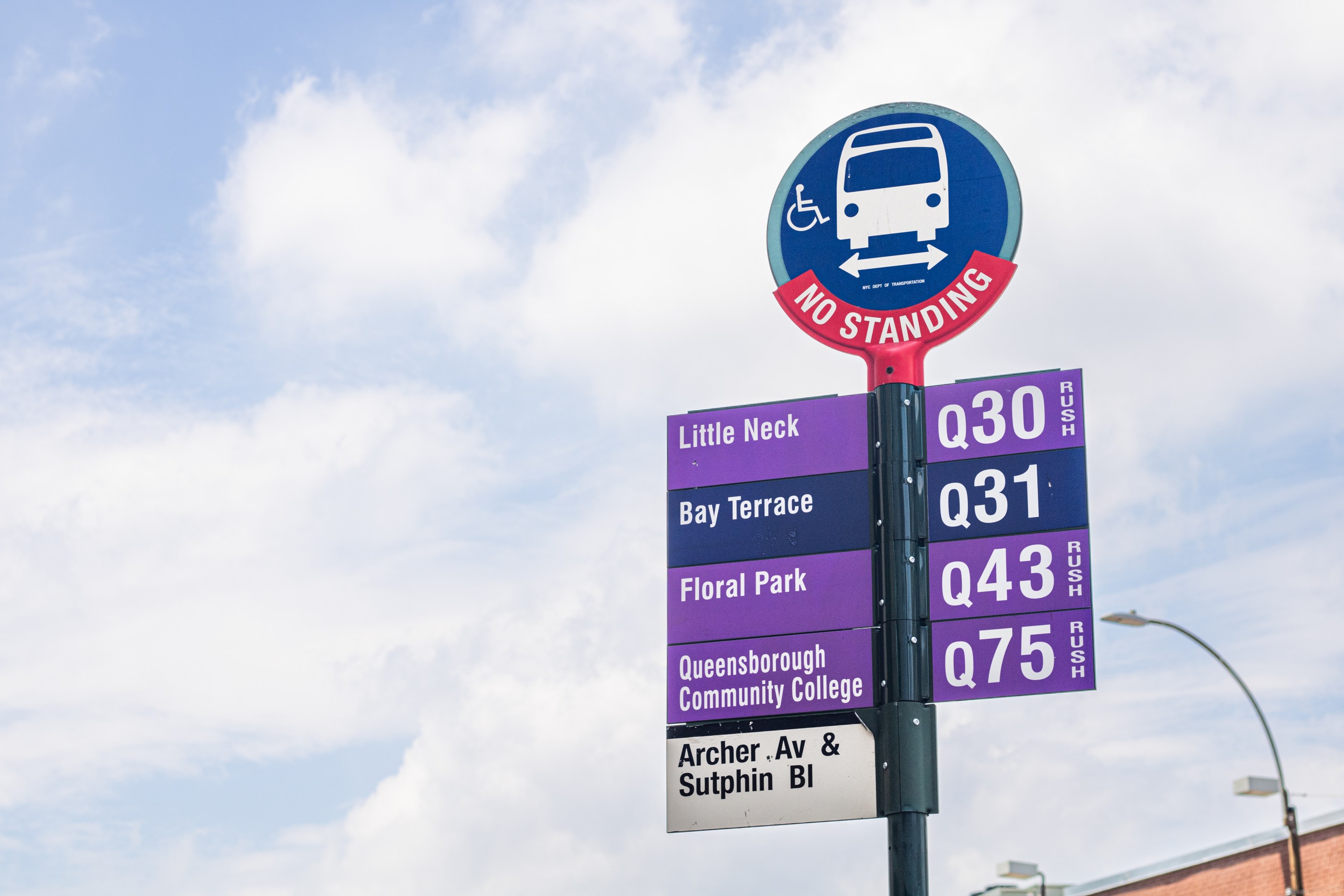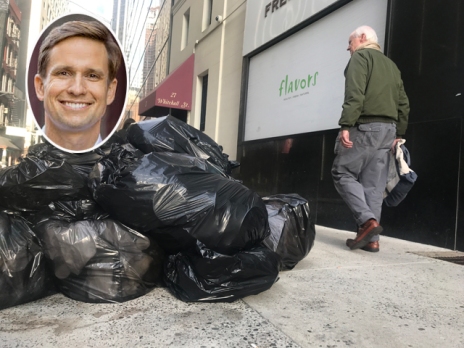
As New Yorkers hit the streets for the joy of seeing the season’s twinkling lights and festive store windows, we’re bound to encounter familiar sidewalk obstacles: Christmas-tree sellers, slow moving hordes of tourists, and newspaper boxes aplenty. Another, more pressing obstacle is a year-round shame and stain on our municipal honor: mountains of trash bags on our sidewalks.
On trash collection days, New Yorkers are forced to navigate around piles of garbage bags that take up valuable sidewalk space. In addition to making life more difficult for pedestrians, especially users of mobility aids like wheelchairs and people pushing strollers, trash bags on the sidewalk also serve as a midnight buffet for rodents.
It doesn’t have to be this way. The city’s sanitation and sustainability policies have long been stuck in the past and are in serious need of common-sense updating — which is why I ran for City Council, and won, in part, on a plan for rationalizing our sanitation practices.
Instead of piling bags on the sidewalk in front of each building for collection, the city should allow communities to use on-street containers or corrals in centralized locations on each block. Cities around the world, including Buenos Aires and Barcelona, already have bettered the quality of life for millions of residents with such containers.
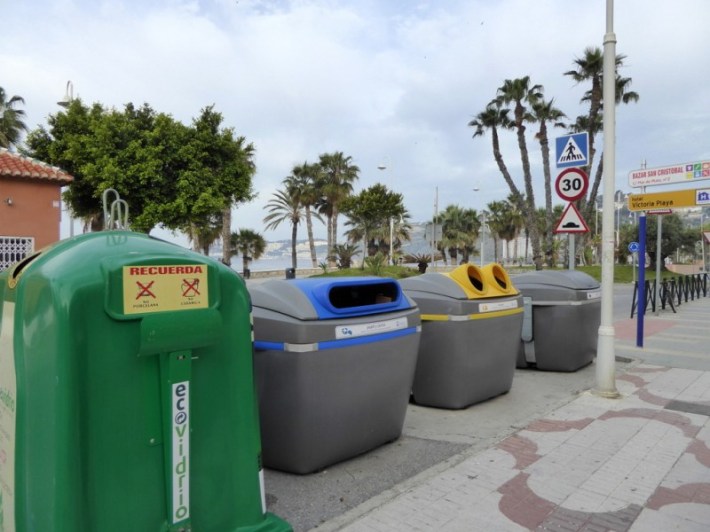
Indeed, the Department of Transportation and the Department of Sanitation last year announced a pilot project to install on-street garbage corrals for commercial waste, primarily in Business Improvement Districts. The city should expand it immediately to residential buildings in order to give New Yorkers relief from dangerously congested and unsanitary sidewalks [Sanitation Commissioner Ed Grayson commented on this recently in Streetsblog].
Making this change viable in New York City will require careful piloting and fine tuning, and the DSNY will need to update some trucks and pickup procedures, but the payoff for New Yorkers will be immense.
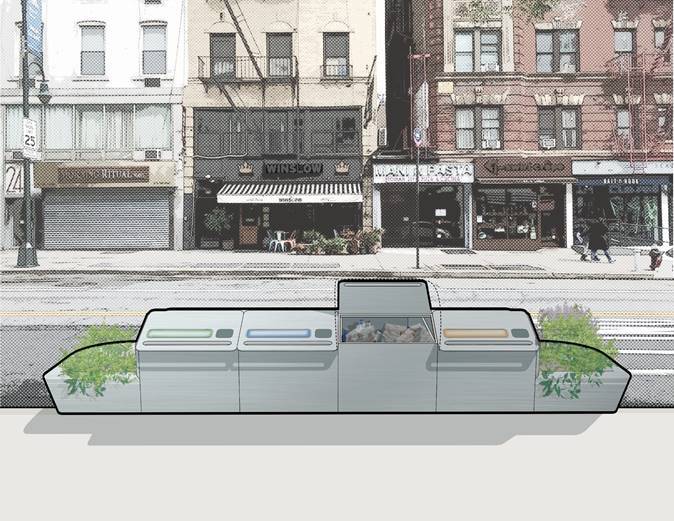
Even as we pursue this structural change to our sanitation practices, the city should implement other features of my sanitation plan, now.
Let’s start by raising our standards. Every year, the Mayor’s Office of Operations issues Street & Sidewalk Cleanliness Ratings, but the cleanliness scores don’t seem to correspond to conditions on the ground.
For example, the city rated as “acceptably clean” 94.1 percent of streets in Community Board 2, 88.9 percent of streets in Community Board 4, and 93.7 percent of streets in Community Board 5 in the November 2020 monthly report. The areas covered by these CBs — which I will represent in the City Council come January — achieved a 100-percent sidewalk-cleanliness rating for the second quarter of Fiscal Year 2021. Needless to say, these ratings are out of step with reality. A more accurate rating scorecard will challenge us to do better as a city.
We also must increase and improve the regularly scheduled cleaning of our streets — by restoring street sweeping to two days a week, as it was before the pandemic. We need smaller street sweepers that are able to properly clean our bike lanes. Sunday-corner basket service was also cut, and needs to be immediately restored.
Let’s create borough-wide Department of Sanitation “strike teams” that respond — in real time — to 311 calls about overflowing waste baskets and other unsanitary conditions. Waiting a day for these situations to be addressed isn’t acceptable.
Of course, the single most effective thing we can do as a city to address the sanitation crisis is to reduce the amount of waste we send to landfills. It’s time to mandate universal organic-waste separation for all residents and businesses — as California did more than a year ago. I will sponsor City Council legislation to make this happen here.
Another senseless practice that has immediate consequences for city streets and disastrous, long-term consequences for the planet is our addiction to single-use plastics. This is one of the reasons why corner waste baskets fill up in a matter of hours. We need to dramatically reduce the use of unnecessary single-use plastics in New York City, including plastic water bottles and cutlery. To help reduce our reliance on single-use water bottles, we should pilot reusable water-bottle refilling stations at fire hydrants, as they did in 2015 in Montreal.
I hope that future generations of New Yorkers will look back at our current sanitation practices with a sense of disbelief, remarking on how far our city has come. I hope they’re shocked to learn that we threw away nearly every fork we used and every bottle we drank from, and piled mountains of trash on the sidewalk. We can do so much better. Let’s make it happen.
Erik Bottcher (@ebottcher) is the Council member-elect for Council District 3, which includes the neighborhoods of the West Village, Chelsea, and Hell’s Kitchen. You can read his sanitation plan and other policy proposals at ErikBottcher.com.
